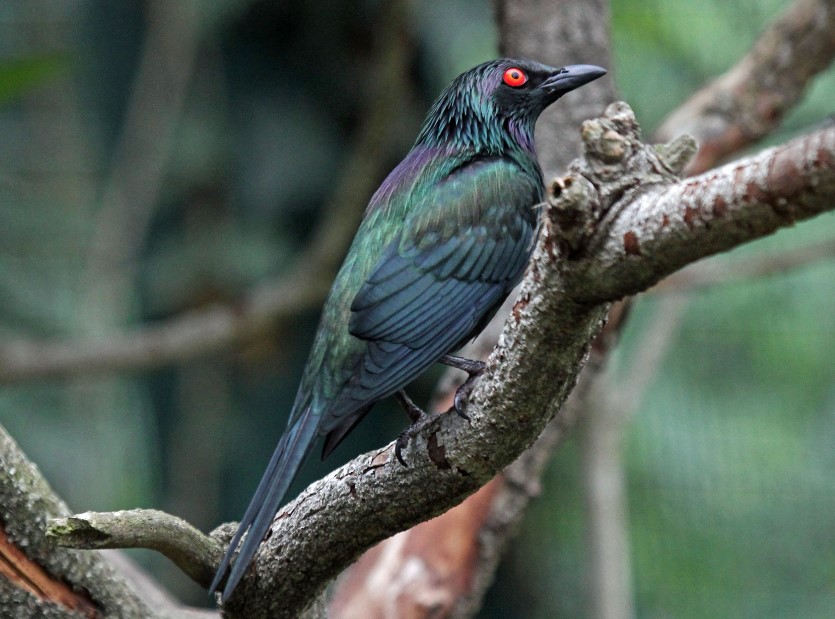There is only one native starling in Australia, the Metallic Starling (Aplonis metallica). This bird observation confirms the opinion that starlings are delightful, despite their differences in appearance and behavior.
An individual with an exquisite sense of fineness and gregariousness. Bulging-red-eyed birds migrate to the northern Queensland coast every August-September to breed. In March and April, most of the birds leave again for winter quarters in New Guinea.
Due to their colonial nature, these birds are conspicuous, as they travel in large flocks and are very noisy. Rainforest trees and orchards produce fruit that draws birds from almost everywhere to feed, and they go from one tree to the next all day long.
A few hundred shuffle about in the foliage, picking fruit and knocking off what they can’t eat. In spite of the fact that starlings glean and sally after occasional insects and rifle nectar, fruit accounts for 95 percent of their diet.

It is common to see birds sitting in lines on branches, sunning themselves, grabbing at each other, and jockeying for position. Constant wheezy chattering is how they keep in touch and identify themselves. Sometimes, they roost on overhead wires or street trees at dusk or during the day, depending on the weather. In swift, direct flight, flocks hurtle through and over rainforests, calling as they go.
There can be thousands of breeding colonies. Often a rainforest tree emerges on the edge of a clearing, they hang its bulky nests from its branches to make a permanent home. Over time, excreted seeds, decomposing nests, and other debris build-up beneath it, accompanied by branches that sometimes break off from the nests’ weight.
There is a constant stream of flocks that come and go throughout the day, making a deafening noise as they move. There are two or perhaps three broods per pair in a season. There are several names for this bird, including Shining Starling, Australian Shining Starling, and Glossy Starling. Since they are well separated from humans and their activities on the ground below, they are not afraid of them.
In fact, Metallic Starling colonies are even more numerous than Nutmeg Pigeon colonies, but they are not nearly as fruitful as the pigeon colonies.
Metallic Starlings measure 210-240 mm in length. There is no difference between the sexes. However, the crown nape, upper back, and upper breast are glossy black with green reflections and purple iridescence. Neck feathers long, spiky; tail long, tapered. Their eyes are orange-red along with a black bill and feet.
An immature bird’s back is glossy black, and its underparts are white with black streaks. It develops a black breast band before it reaches full adult plumage. In tall rainforest trees, they breed in messy suspended globular nests built by flocks of them. It may only be during the rainy season that they breed in such nests.

The Metallic Starling’s call consists of nasal, metallic wheezes, chants, and chatter. There is trilling and fluting in the song, however, but it is short and canary-like.
There is a nesting and breeding season in colonies from August to December-January. An extremely large and bulky nest is built by the bird, which is tapered above and has a side entrance that is sometimes extended into a spout, measuring 250-500 mm long x 200-250 mm wide.
A nest is made of tendrils lined with strips of palm leaf, hung from the branches of a tall rainforest tree in dense packs.
It lays two or three, rarely four, pale blue-to-green-white eggs that are freckled with red-brown and purple-grey, particularly toward the larger end; oval, approximately 30 x 22mm.
Breeding in Queensland and occasionally struggling to Sydney region, this beautiful starling migrates from Cape York to Repulse Bay during the breeding season.
In lowland rainforests and their fringes, and occasionally in mangroves, but also visits cultivated fruit gardens. It is native to Queensland, the Moluccas, and the Banda arc, as well as New Guinea and the Solomon Islands. There are five races, but only one is found in Australia.







